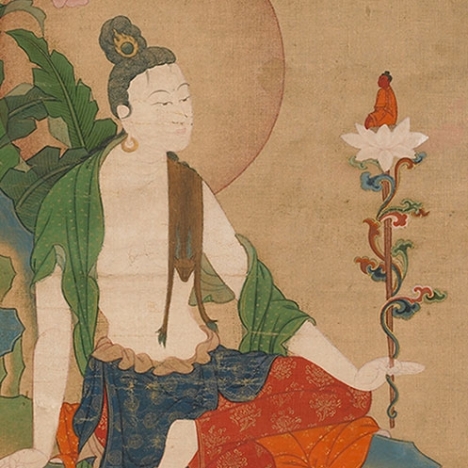
Situ Panchen (1700–1774) was both a hierarch of the Karma Kagyu School of Tibetan Buddhism and an important patron and artist, credited with reviving the court style of the Karmapas known as the Encampment style (Gardri), which quickly became popular in his native Kham Province in southeastern Tibet. This style is characterized by figures based on Indian aesthetic models of proportion placed in open, airy bluegreen landscapes of Chinese inspiration that often suggest a sense of depth and receding space.
As Situ worked directly with artists, the painters of this work would have known him well enough to create an accurate likeness. One of Situ’s main artistic disciples in his later years, Karsho Karma Tashi, probably designed and painted the originals for this and a few other paintings in a famous set depicting the masters of the combined Kagyu lineages. The physical appearance of Situ Panchen in this painting tends to support a dating to the late 1750s or later. The long-life goddess White Tara, with whom Situ had a special relationship, was also included as a wish for the aged Situ Panchen’s continued longevity. Notice White Tara’s hair bun is off to one side, a characteristic of Situ’s depictions of this goddess.
38 1/2 x 23 1/8 in.
C2003.29.2, HAR65279
- https://dev.rubinmuseum.org/images/content/724/c2003.29.2har65279-(with-brocade-b)__zoom.jpg
- https://dev.rubinmuseum.org/images/content/724/c2003.29.2har65279-(with-brocade-b)__zoom.jpg

__slider.jpg)
